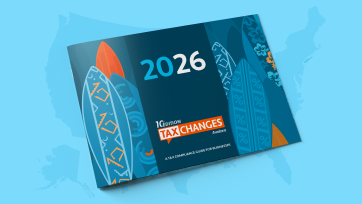Net, Gross and Billed: Which Fuel Volumes to Use When
If you thought the significance of 60 degrees Fahrenheit was the difference between feeling hot or cold, you probably haven’t had a chance to chat with your company’s tax manager about gross tax versus net tax.
When you do, she’ll tell you that this is the zero point on the temperature scale at which motor fuel is considered “normal” in the U.S. Transport it to a region with higher temperatures, and the fuel will begin to expand. Go to a colder climate and it’ll contract.
In other words:
A gallon of fuel is a gallon of fuel—as long as it stays at precisely 60℉. Most of the time, however, a gallon won’t be exactly a gallon. As fuel is bought and sold and moved from state to state, it will change in weight, volume and energy content.
How Fuel Is Measured
Here’s a simple scenario to help show how this can play out when you’re buying at the rack:
Let’s say your company is purchasing a 5,000 gallon gross load of diesel.
If your trader drives from Colorado to Arizona to collect it, there’s a good chance that the fuel at rack will be much warmer than your insulated tanks. Hence, it will likely shrink after it hits them and you’ll actually net less than 5,000 gallons.
On the other hand, the opposite would happen if you’re transporting fuel from Arizona to Colorado. In that scenario, cold fuel would enter warm tanks and you’d end up with more net fuel as it expands.
Now, Back to Your Tax Manager
Now that it’s clear how fuel is measured to account for fluctuating volumes as it’s transferred from one temperature to another, how is it taxed?
The answer depends on the jurisdiction. In the U.S., many states charge fuel excise tax based on the billed volume—essentially, the measurement the buyer and supplier agree to use when calculating invoices. But some states mandate that all fuel taxes be calculated based on gross volume, regardless of what the bill says. And a dozen or so tax based purely on net volume. For example:
- In New Hampshire, fuel excise tax is based on gross volume
- Next door in Massachusetts, it’s calculated by net volume
- A few states over in Delaware, some taxes and fees are based on gross volumes while others require billed
And that's just for excise tax. In some states, fuel taxes are based on one volume type while sales use tax is based on another.
If that sounds incredibly complex and hard to follow, that's because it is.
Why You Should Always Know What Tax Rates to Apply
When you know which measurements to use in different circumstances, you can reduce your risk of non-compliance and avoid over or underpaying.
The biggest conflicts I’ve seen come about involve a licensed distributor anticipating a different rate than the one charged by the vendor. In these situations, don’t hesitate to question the rate if you think it’s wrong. This is where a knowledge of net, gross and billed volumes—and the tax laws that determine what to use and when—comes in handy.
This is especially true if you do business in a state where rates change frequently. In Michigan, for example, the sales tax rates on diesel fuel tends to be adjusted monthly; I’ve noticed it change as frequently as every two weeks at times.
So…
Now that you know the difference between net, gross and billed fuel volumes, how will it change the way you look at the complexities faced by your tax manager?

Avalara Tax Changes 2026 is here
The 10th edition of our annual report engagingly breaks down key policies related to sales tax, tariffs, and VAT.
Stay up to date
Sign up for our free newsletter and stay up to date with the latest tax news.














